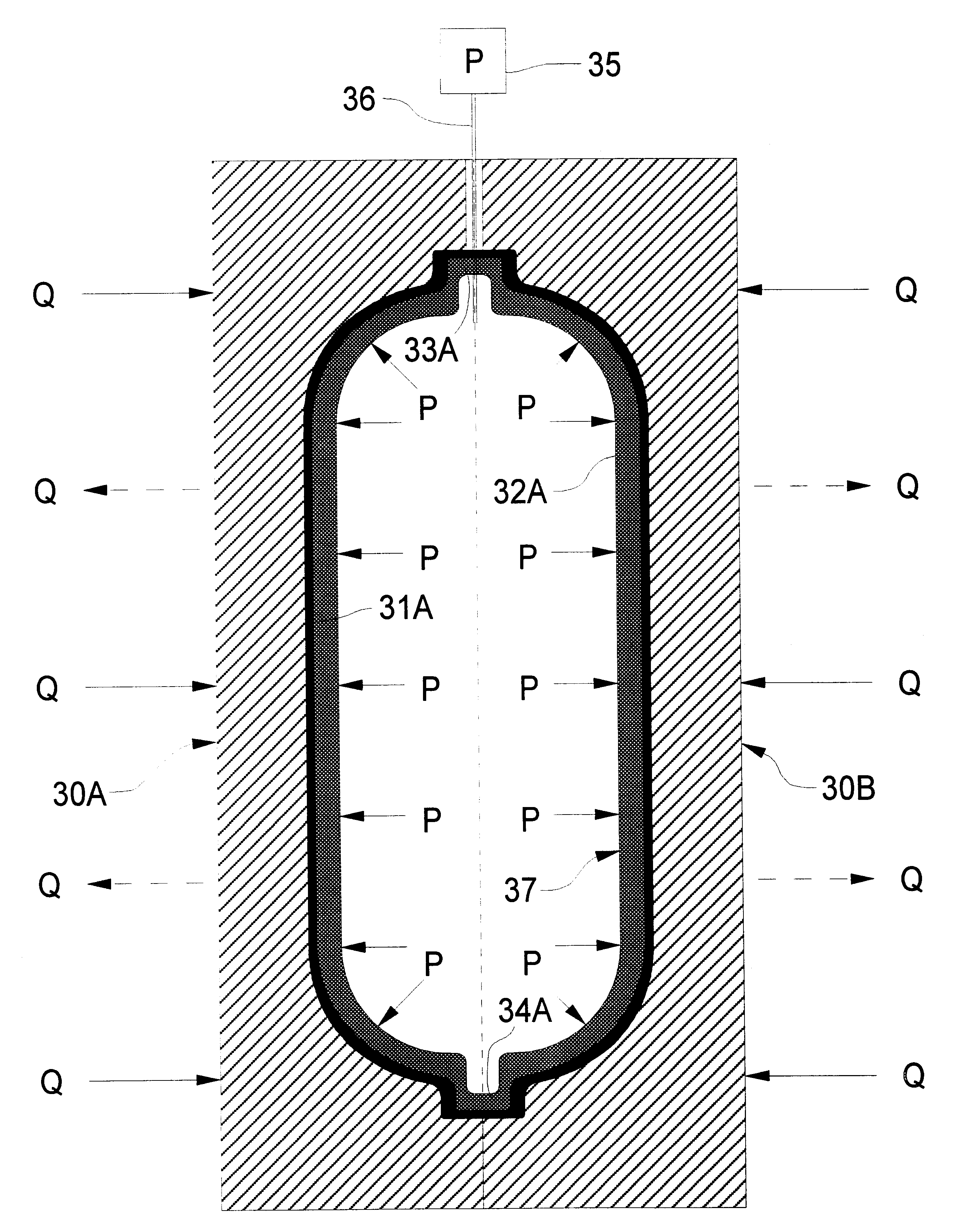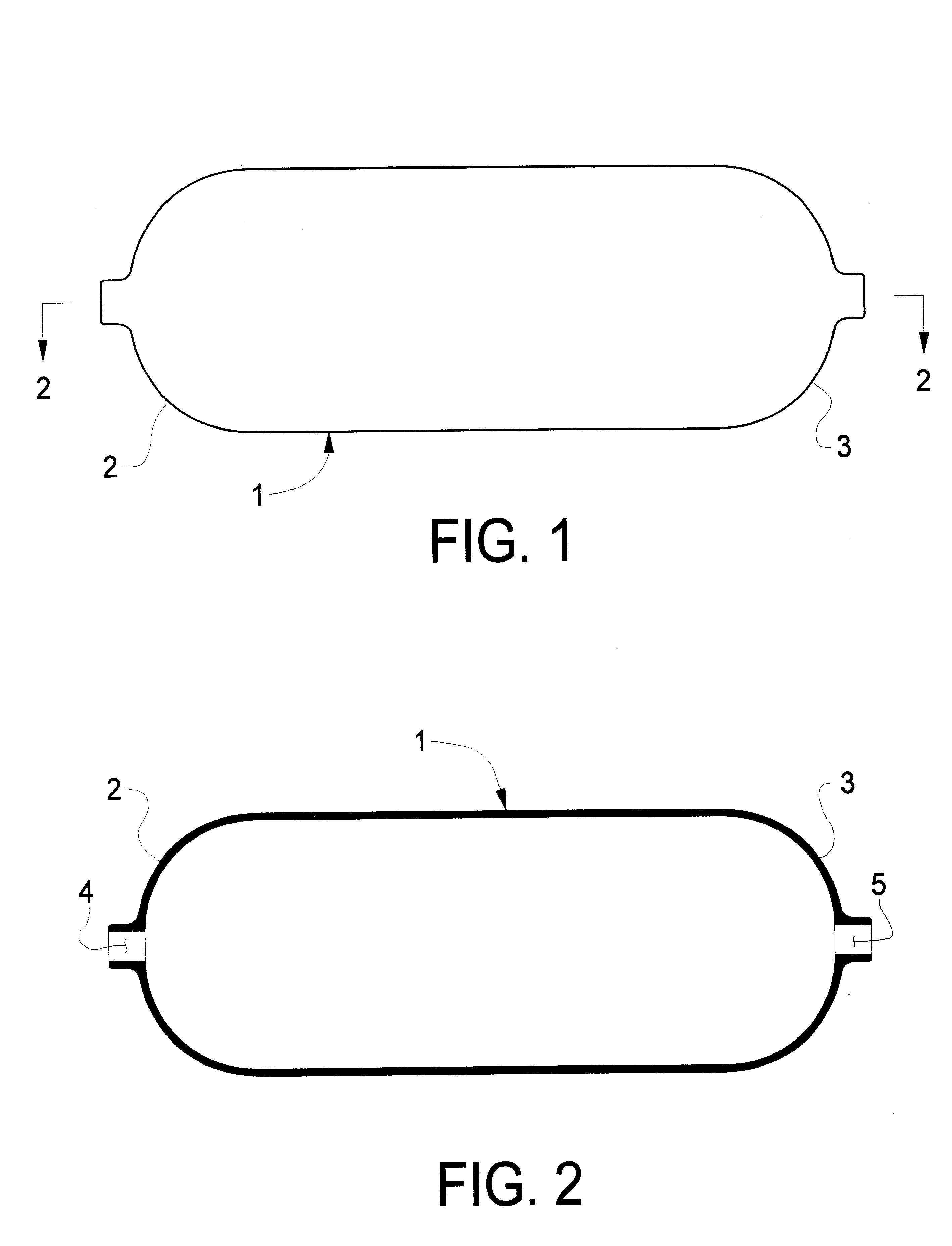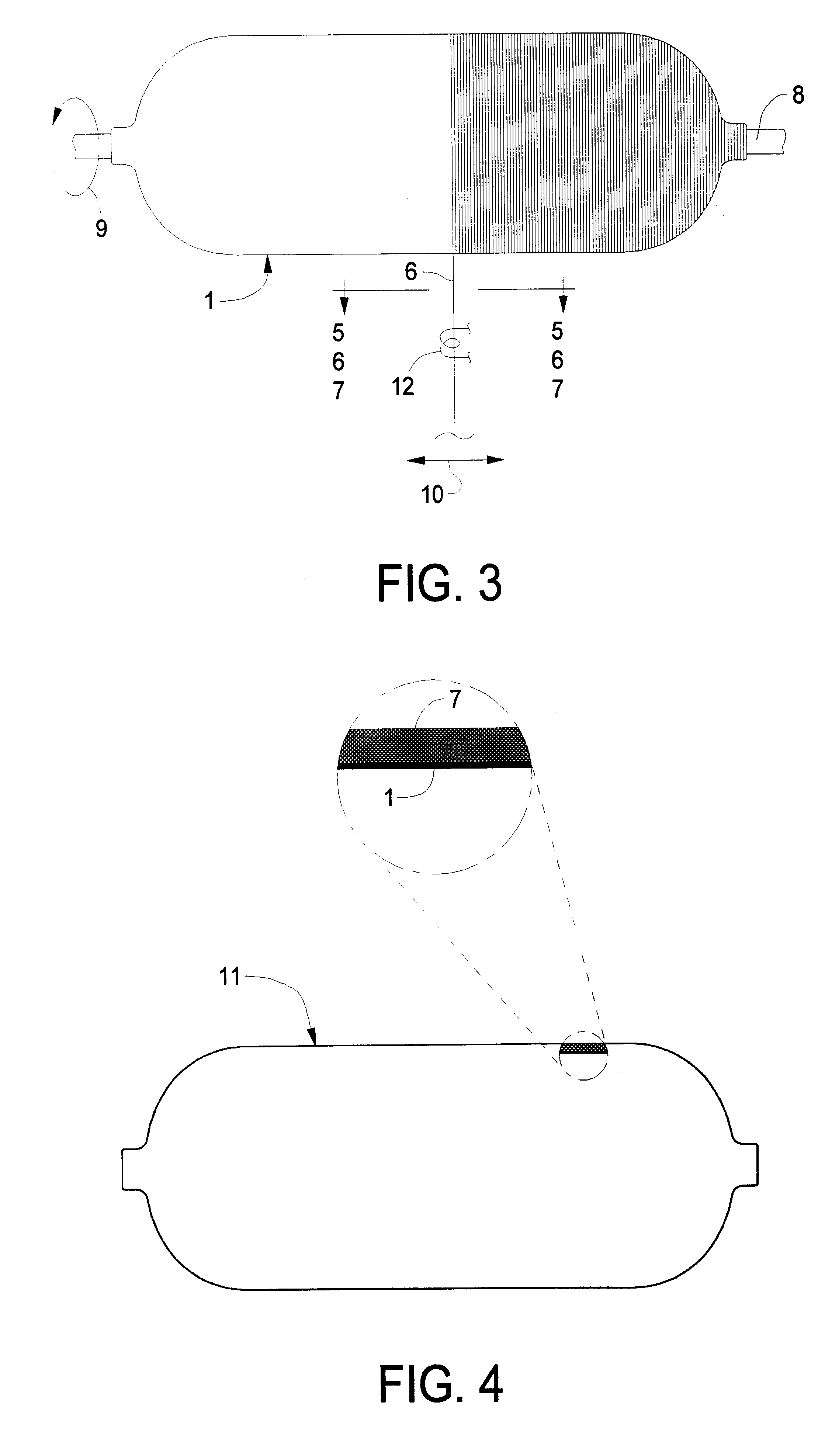Method for fabricating composite pressure vessels
a pressure vessel and composite technology, applied in vessel construction details, machines/engines, other domestic articles, etc., can solve the problems of limited temperature capability, lack of extended durability, unsatisfactory finished product aesthetics,
- Summary
- Abstract
- Description
- Claims
- Application Information
AI Technical Summary
Benefits of technology
Problems solved by technology
Method used
Image
Examples
Embodiment Construction
)
Referring first to FIGS. 1 and 2, there is shown a thermoplastic liner / mandrel 1 for a composite pressure vessel to be fabricated according to a first inventive embodiment. In the exemplary embodiment, the liner / mandrel 1 is a generally elongated preformed structure terminating at each end in a dome shape 2, 3 having a central, axial opening 4, 5. Thermoplastic liner 1 may, for example, be made of polypropylene, polyethylene, polybutylene terephthalate, polyethylene terephthalate or fiber (e.g., fiberglass) impregnated polypropylene, polyethylene, polybutylene terephthalate or polyethylene terephthalate or another thermoplastic material with appropriate characteristics and can be prepared by any suitable conventional process such as molding a combination of chopped fiber, directional, woven and / or knitted fiber fabric sewn or welded together in the shape of the vessel and commingled with thermoplastic material.
As shown in FIG. 3, a filament, roving, yarn or tape 6 of fiber (e.g., f...
PUM
| Property | Measurement | Unit |
|---|---|---|
| Force | aaaaa | aaaaa |
| Pressure | aaaaa | aaaaa |
| Mechanical properties | aaaaa | aaaaa |
Abstract
Description
Claims
Application Information
 Login to View More
Login to View More - R&D
- Intellectual Property
- Life Sciences
- Materials
- Tech Scout
- Unparalleled Data Quality
- Higher Quality Content
- 60% Fewer Hallucinations
Browse by: Latest US Patents, China's latest patents, Technical Efficacy Thesaurus, Application Domain, Technology Topic, Popular Technical Reports.
© 2025 PatSnap. All rights reserved.Legal|Privacy policy|Modern Slavery Act Transparency Statement|Sitemap|About US| Contact US: help@patsnap.com



